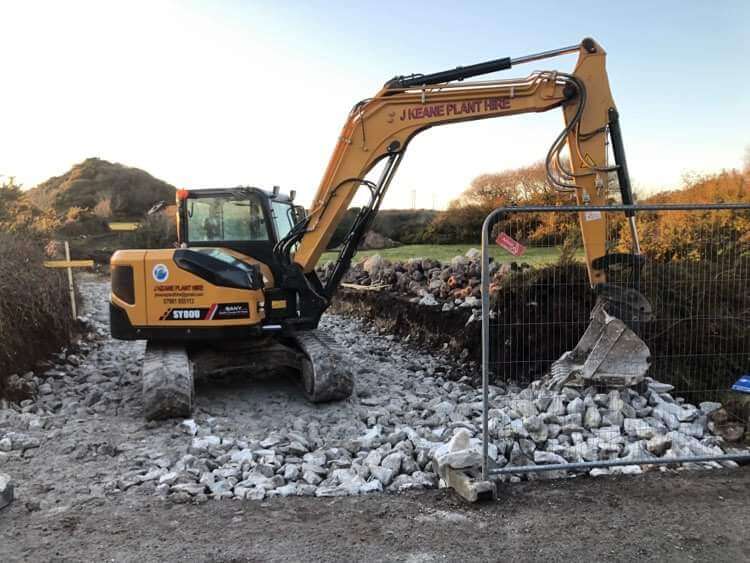Plant hire can be extremely convenient for those looking to speed up a construction project. However, there are some safety concerns that should be addressed before you can take full advantage of these benefits. Fortunately, with the right knowledge and precautions, it can be done safely and efficiently. This article will guide you through the steps to safely operate a mini digger, from preparation to maintenance and operation. We will also highlight the risks of unsafe operation and provide a safety checklist for your convenience.
Step One: Plant Hire Preparation
- Read The Manual: Before operating any machinery, it is important to take a look at the user manual to thoroughly familiarise yourself with plant hire. Get accustomed with the controls, safety features and maintenance requirements of the mini digger.
- Inspect The Equipment: Conduct a visual inspection of the mini digger. Check for any signs of damage or wear and tear. It’s important to ensure that all parts are intact and functioning correctly.
- Check Your Surroundings: Survey the area where you will be using the hired mini digger. Look for any obstacles, such as rocks, trees or utility lines. Additionally, you should ensure that the ground is stable and level.
Step Two: Mini Digger Maintenance
- Regular Servicing: It’s key for plant hire maintenance to adhere to the servicing schedule provided in the user manual. Regular maintenance ensures that the mini digger remains in the best possible condition and reduces the risk of mechanical failure.
- Fluid Levels: Check the fluid levels, including engine oil, hydraulic fluid and coolant. Ensure they are at the recommended levels.
- Clean The Digger: Keep the mini digger clean to prevent dirt and debris from causing damage or reducing efficiency. Pay special attention to the tracks and attachments.

Step Three: Operating Procedure
- Start-Up Procedure: Follow the correct start-up procedure as outlined in the user manual. Typically, this involves checking that all controls are in neutral, turning the ignition key and allowing the engine to warm up.
- Control Familiarisation: Before commencing work, spend some time familiarising yourself with the controls. Practice basic movements such as lifting and lowering the arm, swinging the cab and moving the tracks.
Safe Working Practices
- Seatbelt: Always wear the seatbelt when operating the mini digger.
- Speed: Operate at a safe speed, especially when manoeuvring in tight spaces.
- Visibility: Ensure you have a clear view of the working area at all times. Use mirrors and cameras if available.
- Shutdown Procedure: Follow the proper shutdown procedure, including lowering the arm to the ground, turning off the engine and locking the cab.
An Overview Of Unsafe Operation Risks
Mini diggers can tip over if operated on uneven ground or with an overloaded bucket, so it’s important to ensure the stability of the plant before starting work. What’s more, be aware of your surroundings to avoid collisions with obstacles, structures, or other machinery. We advise you keep hands, feet, and clothing away from moving parts to prevent entrapment. Additionally, do not exceed the mini digger’s load capacity, as overloading can cause mechanical failure and increase the risk of accidents.
Safety Checklist
- Read the user manual.
- Conduct a visual inspection of the mini digger.
- Survey the operating area for obstacles and ensure stability.
- Check fluid levels and perform regular maintenance.
- Familiarise yourself with the controls.
- Always wear the seatbelt.
- Operate at a safe speed.
- Maintain clear visibility of the working area.
- Follow the correct start-up and shutdown procedures.
- Avoid overloading the mini digger.
By following these steps and adhering to best practices, you can safely operate a mini digger and avoid common hazards. Remember, safety should always be your top priority when operating any machinery.



